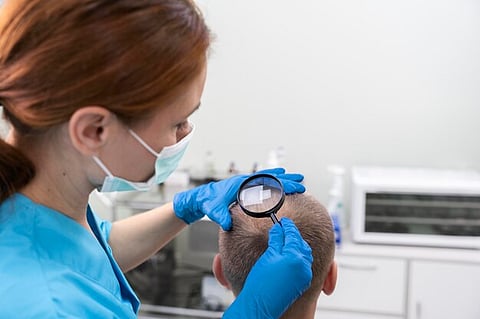Exploring the Range of Hair Loss Treatments Available at Hair Loss Clinics
Hair loss is a common concern that often impacts confidence and self-esteem. Recently, demand for hair loss treatments has grown due to greater awareness and medical advancements. This field blends health and beauty, drawing interest from people looking for effective solutions. Whether due to genetics, stress, or environmental factors, hair loss affects millions, driving constant innovation and research. Providing solutions for different needs and conditions makes this an important topic in both beauty and health.
The wide range of treatment options available at hair loss clinics reveals a complex industry, where personal needs meet advanced science. Treatments vary, including topical applications, oral medications, surgical procedures, and new non-surgical options. Here, we cover consultation processes, explore different treatments, and outline the potential benefits and risks of each. By understanding these options, individuals can make choices that suit their needs and lifestyle goals.
Consultation and Diagnosis
Effectively addressing hair loss starts with understanding its causes. Typically, the process begins with a consultation where a specialist gathers information about your medical history, lifestyle, and family background. Hair loss clinics use various tools, like scalp exams and blood tests, to pinpoint factors such as hormonal imbalances, nutritional gaps, or genetics. An accurate diagnosis is key to creating a personalized treatment plan, boosting the chances of successful results tailored to your unique needs.
This careful approach addresses both immediate concerns and long-term goals, setting up an effective path for restoring hair health. With thorough diagnostics, patients and clinicians can collaborate to create a treatment plan that aligns with personal preferences and medical needs, leading to informed choices and greater satisfaction.
Topical Treatments
Topical treatments for hair loss are a key tool for tackling this common issue, offering both convenience and effectiveness. Minoxidil-based products are among the most popular options, helping with hair regrowth and slowing further loss by stimulating hair follicles. Available as foams and solutions, they are applied directly to the scalp for targeted action. Beyond minoxidil, new topical treatments use natural ingredients and peptides to refresh the scalp environment.
These alternatives appeal to those looking for fewer synthetic additives, providing a different approach to hair health. While results vary, many users report positive effects with consistent use. These treatments are easy to add to daily routines, making them a simple first step or a valuable addition to broader hair care efforts.
Oral Medications
For oral medications to address hair loss, finasteride is a popular choice known for its effectiveness in slowing hair loss and encouraging regrowth. Initially developed to treat prostate issues, it was found to reduce hair loss in many users, which led to its use in hair restoration.
Finasteride works by blocking the conversion of testosterone to dihydrotestosterone (DHT), a hormone linked to hair loss.
While it can be effective in preventing further thinning, possible side effects, including sexual dysfunction, make it essential to consult a healthcare provider before starting treatment. For many, the ease of taking a daily pill offers a simple alternative to more involved methods.
However, weighing the benefits against possible drawbacks is key, highlighting the need for professional guidance when considering this option.
Surgical Solutions
For those seeking lasting hair loss solutions, hair transplants can offer effective results by moving hair follicles from a donor area (usually the back of the scalp) to thinning or balding areas. This precise process often creates a natural-looking hairline, boosting confidence. Results can vary based on factors like the extent of hair loss, hair type, and the surgeon's skill.
Generally, patients can expect fuller coverage, though it may take several months to see full results. It’s essential to consider the recovery time and costs, as these can be significant. While hair transplants are appealing for their lasting effects, they require a thorough evaluation to ensure suitability.
Non-Surgical Alternatives
Non-surgical hair loss treatments are becoming popular as less invasive options that effectively address various types of hair loss. Laser therapy, for example, uses low-level light to stimulate hair follicles, encouraging regrowth with consistent use. Home devices and professional equipment offer flexibility, although results vary for each individual.
Another option, Platelet-Rich Plasma (PRP) therapy, uses a patient’s own blood to extract growth factors, which are then injected into the scalp to support healing and hair growth. PRP is especially suited for those with thinning hair or early-stage hair loss, promoting healthier follicles without surgery.
Hair loss clinics offer a blend of traditional and innovative treatments tailored to a wide range of needs, making hair restoration more accessible and customizable than ever. With options like topical solutions, oral medications, surgical transplants, and advanced non-surgical therapies, individuals can find treatments suited to their preferences and lifestyle. By working closely with specialists for accurate diagnosis and personalized care, patients can confidently pursue options that fit their goals, enhancing not only hair health but also self-confidence throughout the restoration process.
Inspired by what you read?
Get more stories like this—plus exclusive guides and resident recommendations—delivered to your inbox. Subscribe to our exclusive newsletter
Resident may include affiliate links or sponsored content in our features. These partnerships support our publication and allow us to continue sharing stories and recommendations with our readers.

